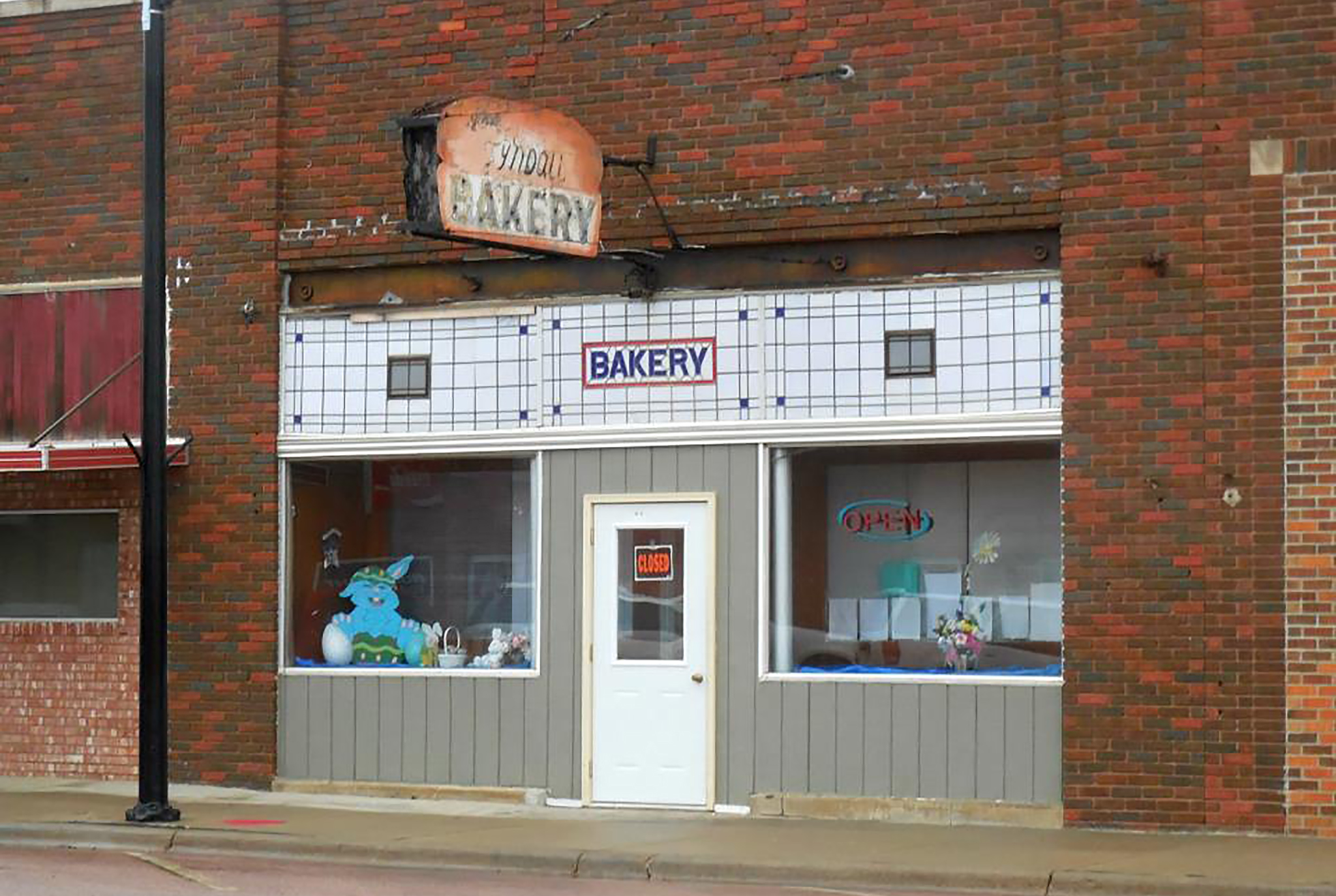The legacy of the Tyndall Bakery stretches over 100 years
November 30, 2022By Becky Tycz, Editor-Publisher, Tyndall Tribune & Register; originally published 11-23-22; reprinted with permission
Waking up at the “crack of dawn” means something totally different for Carol and Ed Radack of Tyndall.
While everyone is all cozy in their beds for a good night’s sleep, the Radacks arrive at their bakery, Tyndall Bakery, at their crack of dawn – an hour or two after the clock strikes midnight.
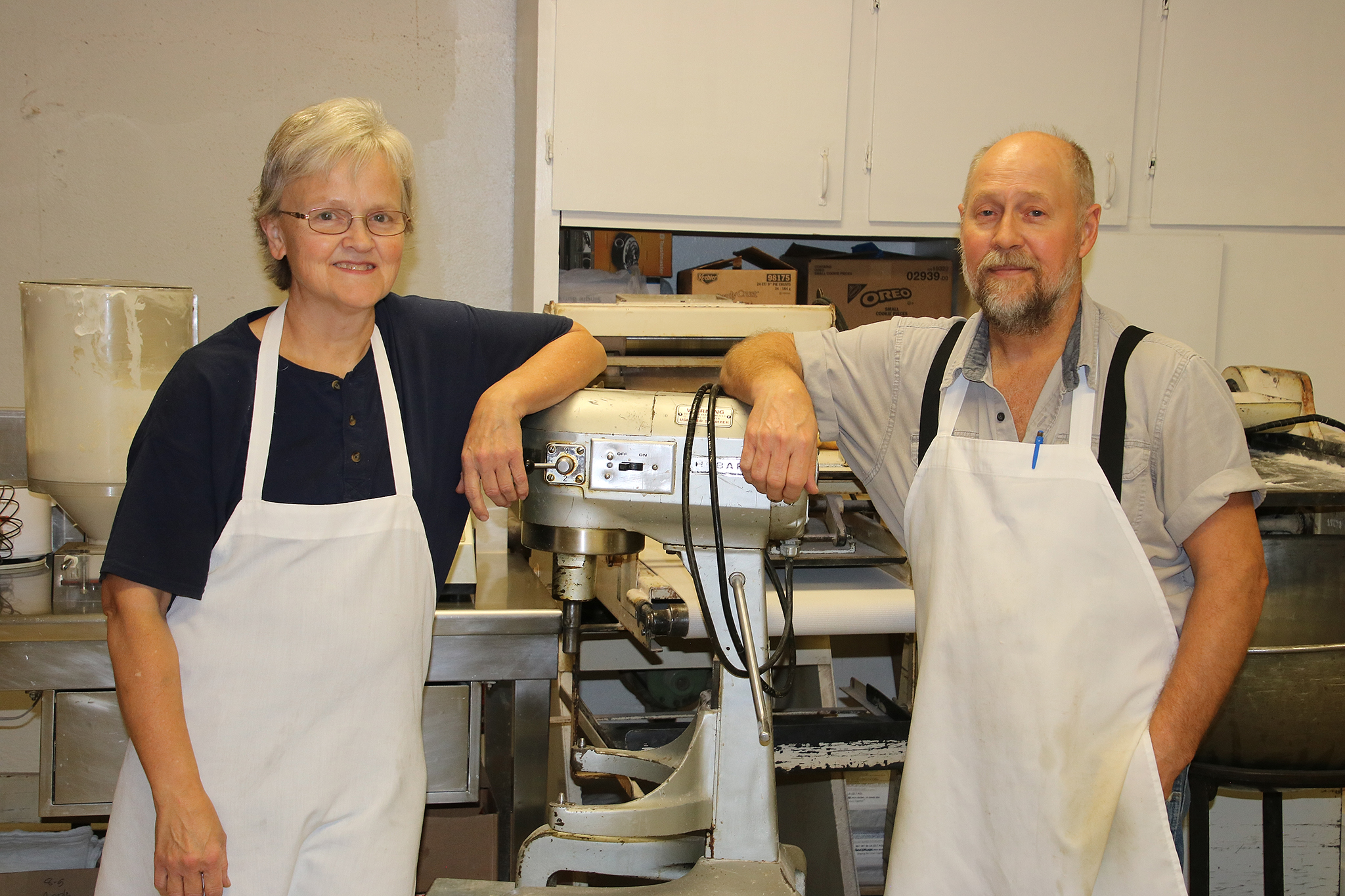
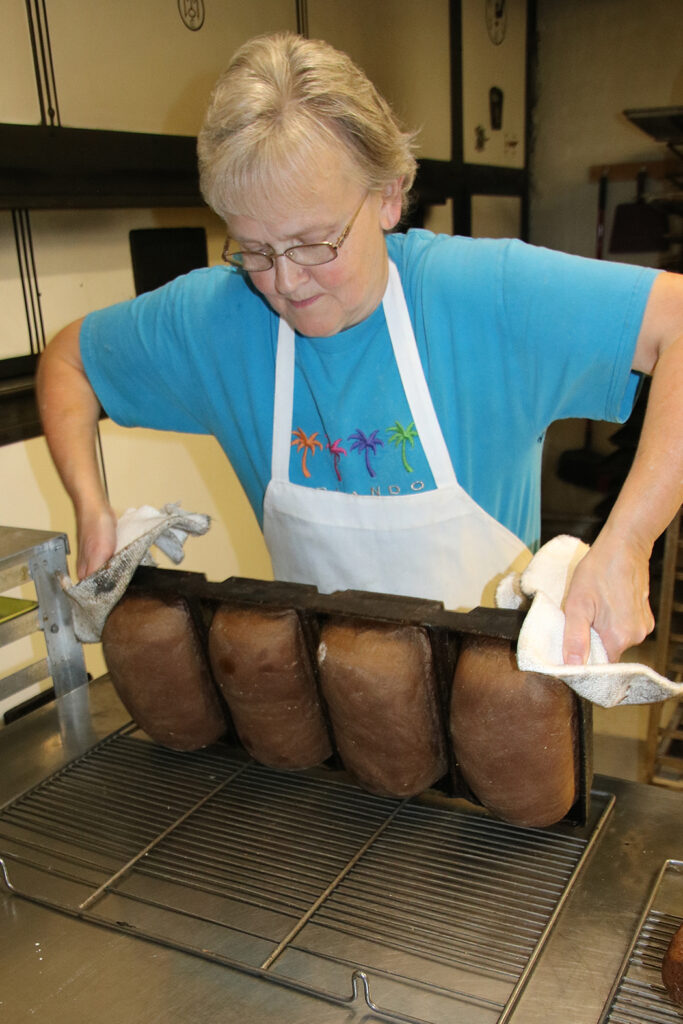
Carol arrives first at the bakery – 1 a.m. to be exact – to get the machines mixing the dough for the day’s supply of bakery rolls. Ed comes in an hour later to start up the oven and fryer.
Once the dough is mixed and doesn’t stick to the sides of the bowl, the dough is ready to sit and rise. The dough should rise until it’s double in size.
Carol comments this process is unpredictable as temperature and moisture play a big part in how long it takes for the dough to rise.
Sometimes the process is faster than other days when the outside temperature is warmer. Generally speaking, a warm, humid environment is best for rising.
Fast forward from the time the dough rises, made into the shape of the roll and rises again. The rolls are either baked in the oven or fried in the fryer.
The majority of the rolls are fried as traditionally customers prefer fried bakery rolls over baked rolls. At least 15 varieties of fried rolls make their way to the showcase on a daily basis.
As far as baked selections, less than five varieties are available.
The original oven (1922) was fueled by coal, and coal needed to be continuously added to keep the oven heated until the baking was complete.
An addition was erected at the rear of the building in 1947 to accommodate a new modern propane fueled oven which is still used to day.
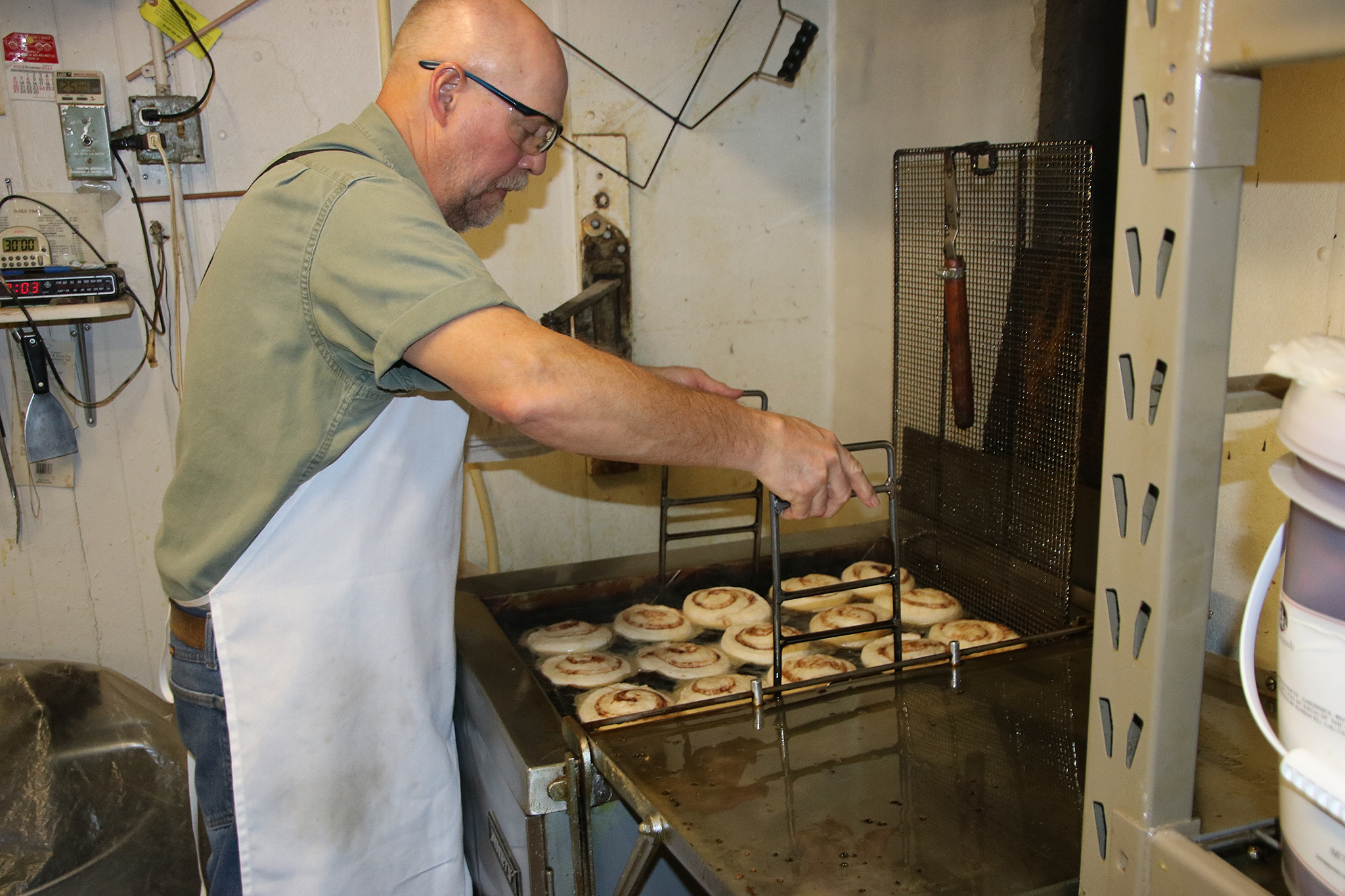

The number one sellers are the apple fritters and peanut fried cinnamon. The Radacks changed the cream-filled donut from a flap over donut with cream filling inside and peanuts on the top in the shape of a rectangle to a round donut with cream filling piped inside and peanuts on top.
The cream filling was developed by Axel Johnson. The secret recipe has been passed down to the Ruebs and then to the Radacks.
The Radacks were instructed not to give out the ingredients of the recipe as to this day, this particular cream filling is one of a kind in South Dakota.
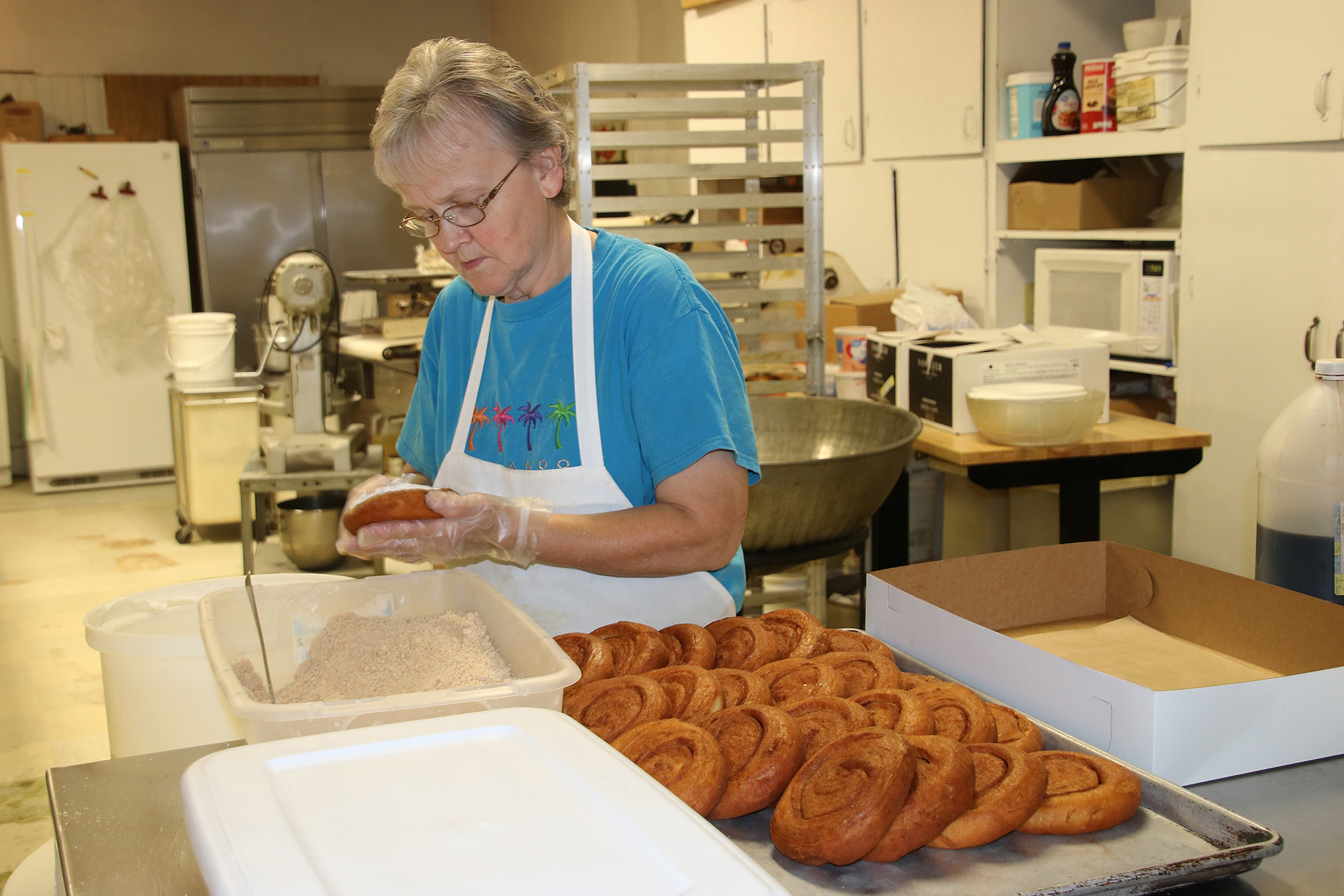
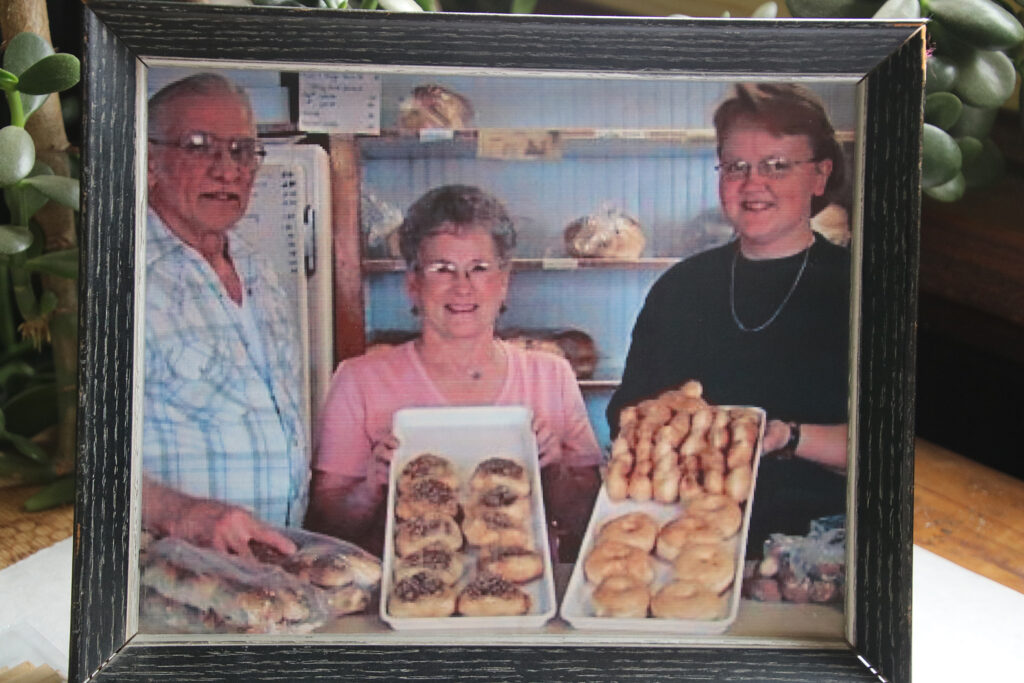
Tyndall Bakery celebrates 100 years of operation this year. Axel Johnson and his dad (A.R. Johnson) started the Tyndall Bakery in 1922. The elder Johnson retired in 1929 and Axel purchased his brother’s share and became the sole owner until 1970 when Bob and Judy Rueb became the new owners.
The Ruebs owned the bakery until 2007 when it was sold to Carol Radack. Basically, the bakery has had three owners – the Johnson family, the Ruebs and now the Radacks.
The business has been located in the same Main Street location all of these years. The bakery hasn’t had much change to its interior or exterior.
The Ruebs added a second door to the entrance. The Radacks recently remodeled the building front with new windows and door and removed the stain glass and closed up the middle part of the front.
When looking back at the history of the Tyndall Bakery, an advertisement was found from the January 28, 1943 local newspaper that stated “no more sliced bread until we win this war.” In accordance with a government war order, the bakery discontinued the sale of sliced bread for the duration.
The Johnson were required to get authorization from the government on whether they could continue to use their six month supply of “sliced” bread label on their wrappers. Authorization was given in the interest of war-time economy. Back in June of 1931, a loaf of bread was sold for 8¢, and two loaves were desired, the cost was discounted to 15¢ for two.
In the showcase, you’ll find a variety of rolls, breads, desserts, cakes, cupcakes, cookies, kuchens and in the winter time candies. After 4 1/2 hours of preparing, the showcase is filled by 6:30 a.m. daily, excluding Sundays and Mondays, ready for early-morning customers who begin to make their way to the bakery smelling the freshly baked pastries.
